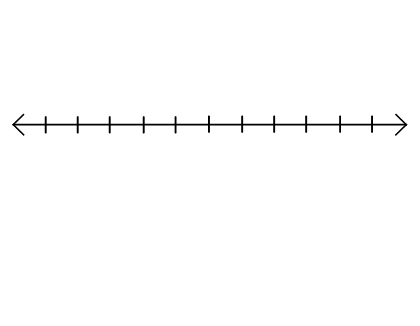When I first started teaching, I didn't understand the importance of number lines. I always had a number line on the wall and one taped on the desks for my students, but I never really incorporated them into my teaching. Now after more than 15 years of teaching math to students in grades K-8, I have grown to realize that number lines are one of if not the most important models a student will use in mathematics. Developing and building a child's number sense cannot happen without the use of number lines. I can tell right away the depth of my students' conceptual understanding depending on their knowledge and flexibility with a number line. It is a model that can be introduced at a very young age and built up year after year, as well as used across many different concepts taught in mathematics.
A great way to build your children's number sense is to have number lines available for them at home to use on homework, studying for a test, and/or playing games. This visual model is so important for young children to see so they can make a connection to the abstractness of numbers.
One number line can be made with whole numbers, fractions, or decimals to show the understanding of parts of a whole. Students need to be able to break a whole number apart into equal groups, and a number line is the best visual to use.
Another great number line to use is an open number line with no numbers or marks so the child can write the numbers in themselves and show their thinking in many different ways. This can also be used with numbers that are small (less than 10) or extremely large (greater than 1000).

A vertical number line is a great tool to help middle school students understand positive and negative numbers. It is especially useful with absolute value and adding, subtracting, multiplying, and dividing integers.
Encouraging the use of number lines at home will reinforce what is being taught in the classroom. It will also help your children to become more independent in their thinking about numbers and in their own modeling. Many students struggle when they have to model their own thinking or have to draw a picture. If your children have difficulty with this on their homework, encourage them to use a number to show how they either added or multiplied the numbers. They can even show how they solved multi-step problems on a number line or broke a problem apart.
Below are some examples of number lines that you can print out from helpingwithmath.com and have available as a tool to deepen your children's understanding of numbers:
